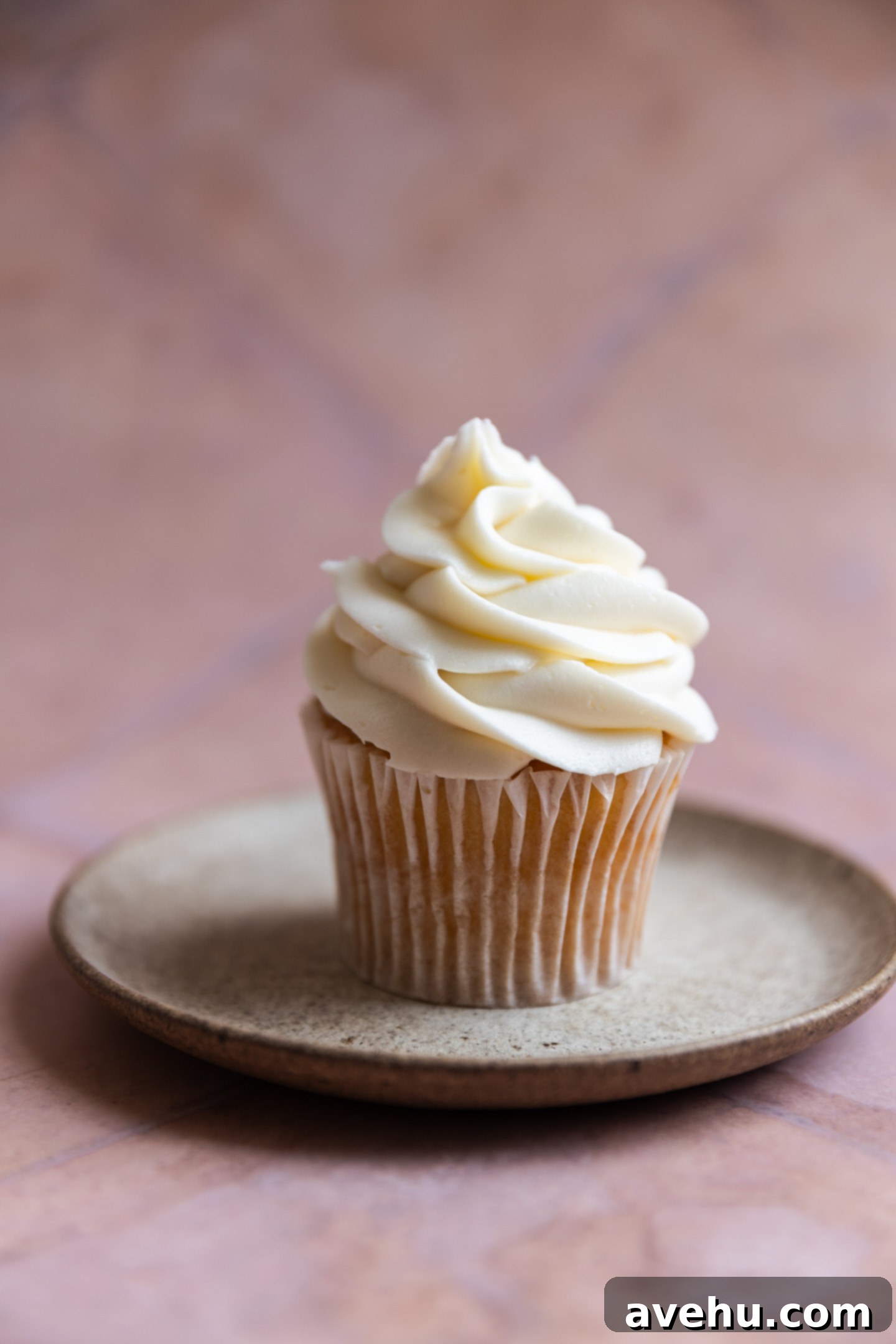Fluffy & Stable Cream Cheese Frosting: The Ultimate Pipeable Recipe
Are you tired of cream cheese frosting that’s too runny to pipe, turning your beautifully baked goods into a gloopy mess? This recipe is your game-changer! I’ve specifically engineered this stable cream cheese frosting to be perfectly pipeable, allowing you to decorate cupcakes, cakes, and other desserts with confidence and ease. It strikes that ideal balance of tangy and sweet, thanks to a carefully calibrated ratio of powdered sugar to cream cheese. The best part? This luscious, thick cream cheese frosting comes together in just about 5 minutes!
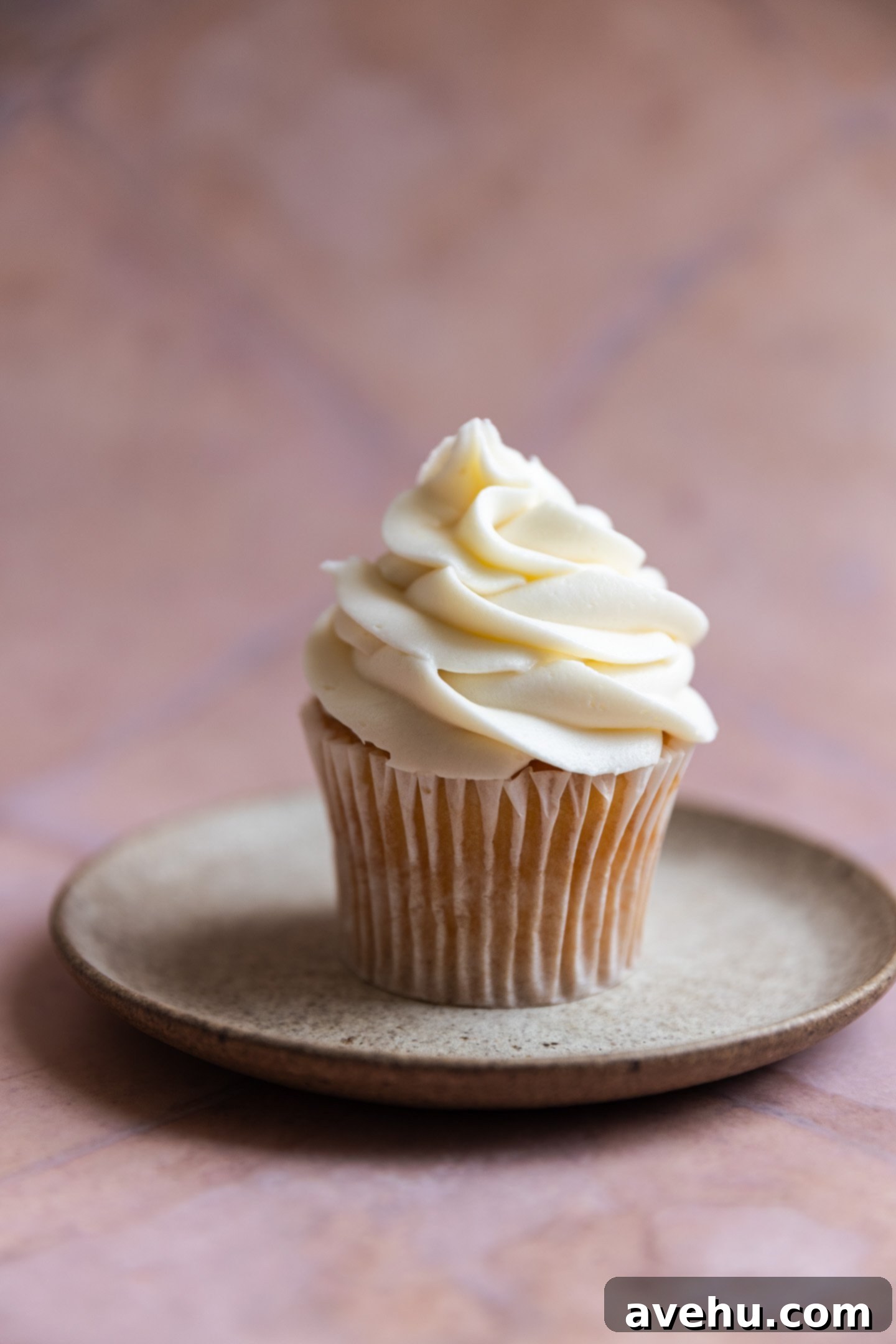
The secret to achieving a remarkably stable and pipeable cream cheese frosting, one that holds its shape beautifully rather than collapsing into a drippy mess, lies in a simple yet crucial adjustment: adding extra powdered sugar and completely omitting any liquid, such as cream or milk, which is often found in many other cream cheese frosting recipes. This subtle change makes all the difference, transforming a potentially runny frosting into a thick, luxurious, and easy-to-handle consistency.
Why Traditional Cream Cheese Frosting Can Be Runny
Many home bakers struggle with runny cream cheese frosting, and there’s a good reason for it. Cream cheese, by nature, has a higher moisture content than butter, and it doesn’t firm up as completely in the refrigerator as a traditional buttercream would. When standard recipes call for 3 to 3 1/2 cups of powdered sugar and then instruct you to add liquid (like milk or heavy cream) to reach the desired consistency, you’re essentially adding more moisture to an already delicate balance. This often results in a frosting that is too soft, not stable enough to pipe intricate designs, and prone to drooping, especially in warmer environments.
This common issue can be incredibly frustrating, particularly when you’ve spent time baking beautiful cupcakes or a multi-layered cake only to have the frosting fail. That’s why I dedicated my efforts to perfecting a recipe that guarantees stability without compromising on flavor or texture.
As a trained pastry chef, I’ve encountered countless frosting challenges. While developing this particular recipe, my initial instinct, born out of habit, was to add a touch of liquid at the end to achieve a smooth finish. However, as the ingredients whipped together in the mixer, a truly crazy thought sparked: what if we just skipped the liquid altogether? Could a perfectly pipeable cream cheese frosting exist without it?
Guess what! It absolutely worked! This revelation led to the creation of this no-fail, stable cream cheese frosting that I’m thrilled to share with you.
Perfect Pairings for Your Stable Cream Cheese Frosting
This incredibly versatile and pipeable frosting is ideal for a wide array of baked goods. It holds up beautifully on:
- Pumpkin cupcakes, adding a delicious autumnal touch.
- This incredible carrot pineapple cake, providing the perfect creamy counterpoint to its rich flavors.
- Classic red velvet cake or cupcakes, where its tangy sweetness is an absolute must.
- Moist banana bread or zucchini bread, transforming them into decadent desserts.
- Cinnamon rolls, offering a thick, luxurious topping that won’t melt away.
- Gingerbread cookies or spice cakes, enhancing their warm, aromatic profiles.
I genuinely enjoy creating cream cheese frostings because they offer so much room for creativity and flavor exploration. Beyond this classic version, you can venture into even more indulgent variations. Imagine making a really decadent chocolate cream cheese frosting, perfect for chocolate cakes or brownies.
Or, if you find yourself in a pinch and realize you’ve run out of butter, don’t despair! You can try this amazing cream cheese frosting without butter. And for those moments when you’re out of powdered sugar, yes, there’s even a solution: make this cream cheese frosting without powdered sugar! Seriously, this frosting base is incredibly versatile, adapting to various dietary needs and pantry situations while always delivering on flavor and texture.
Step-by-Step Instructions for Your Perfect Cream Cheese Frosting
Creating this stable cream cheese frosting is straightforward, but a few key steps ensure its perfect texture and consistency. Paying attention to ingredient temperatures is crucial for a smooth, lump-free result.
Prepping Your Ingredients
First and foremost, make sure that your cream cheese and butter are at proper room temperature before you begin creaming them. This is not just a suggestion; it’s vital for achieving a smooth, well-emulsified frosting. Cold ingredients will result in a lumpy, inconsistent frosting that is difficult to mix and pipe. If your ingredients are too cold, you can cut them into smaller pieces and let them sit out for 30-60 minutes, or gently microwave the butter for 10-15 seconds (be careful not to melt it!).

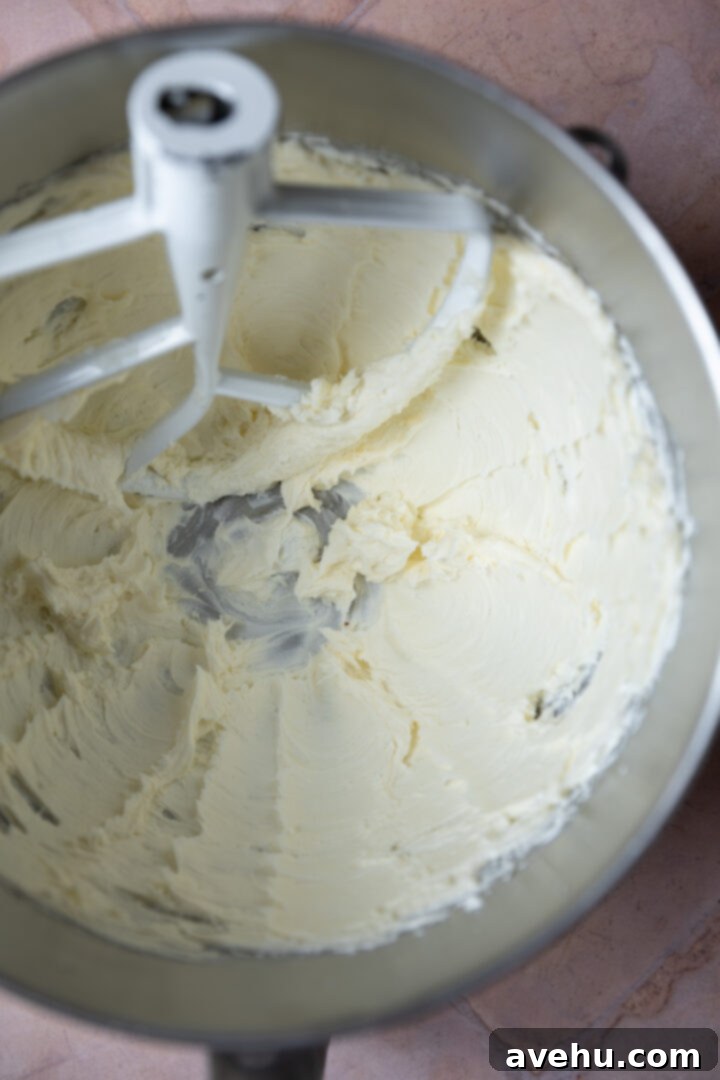
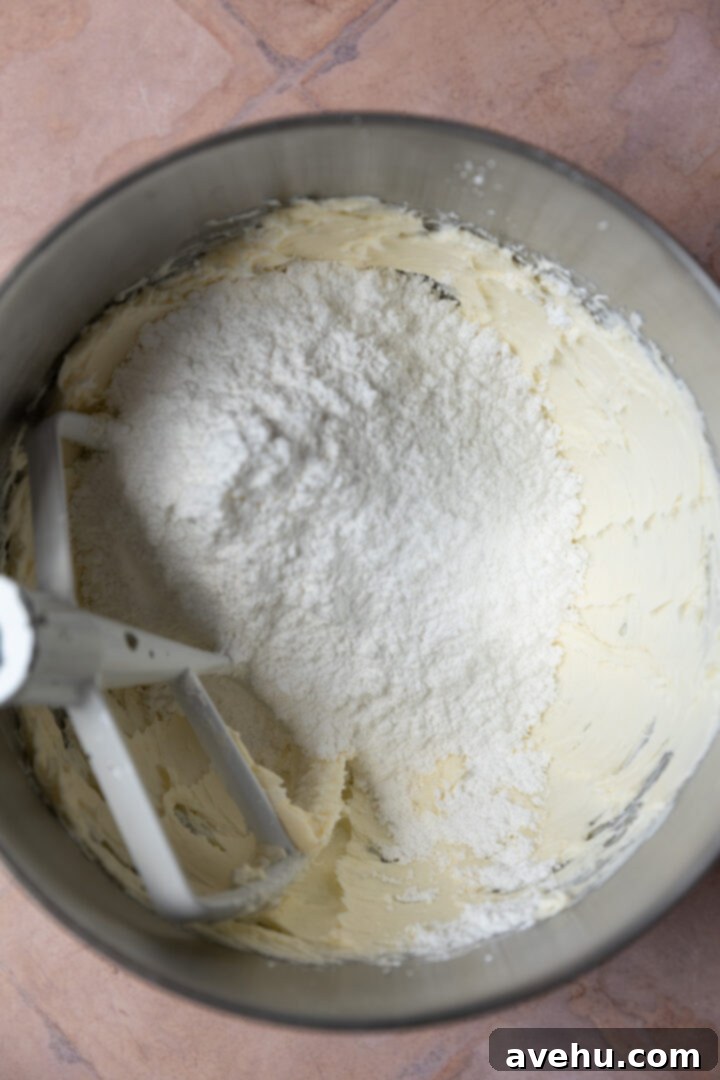
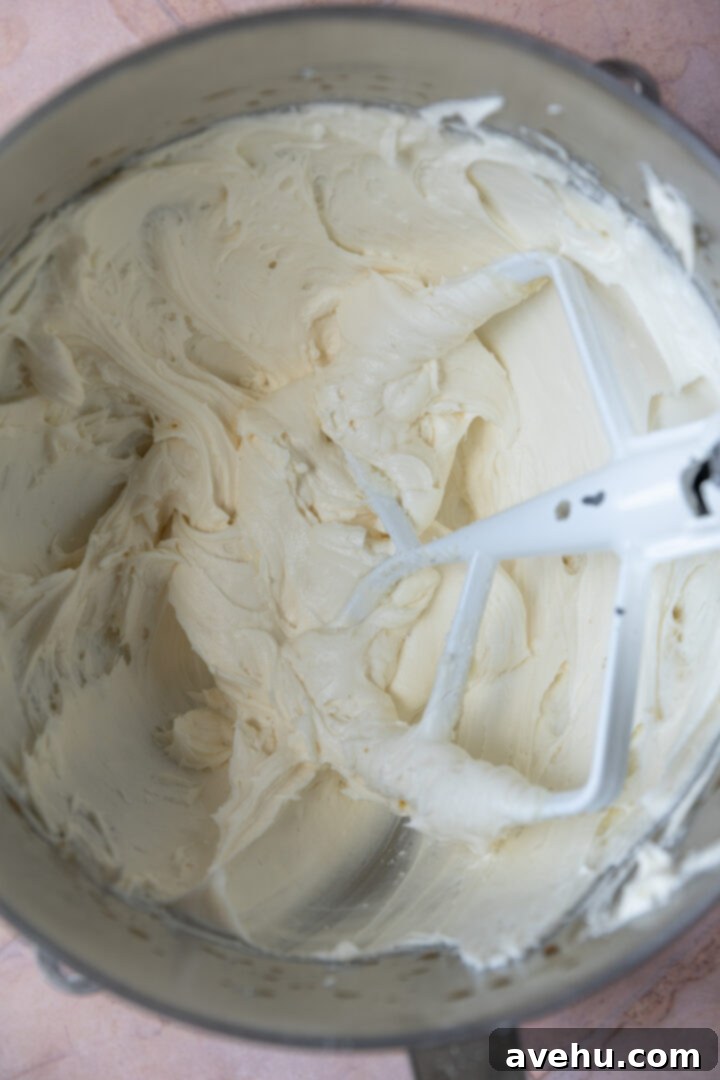
Tips for Extra Stability and Storage
To keep your frosted cakes or cupcakes looking their best and to ensure the frosting remains extra sturdy, I recommend storing them in the fridge until you are ready to serve. This helps the cream cheese and butter solidify slightly, firming up the frosting even further.
This fantastic frosting can be made ahead of time, saving you valuable time on baking day. You can prepare it up to 5 days in advance and keep it stored in an airtight container in the refrigerator. When you first take it out of the fridge, it will be quite firm – too hard to pipe immediately. Just let it sit at room temperature for about 15-30 minutes, or you can even rewhip it briefly with the paddle attachment in your mixer until it reaches your desired pipeable consistency. This quick re-whip will bring back its light and fluffy texture, making it perfect for decorating.
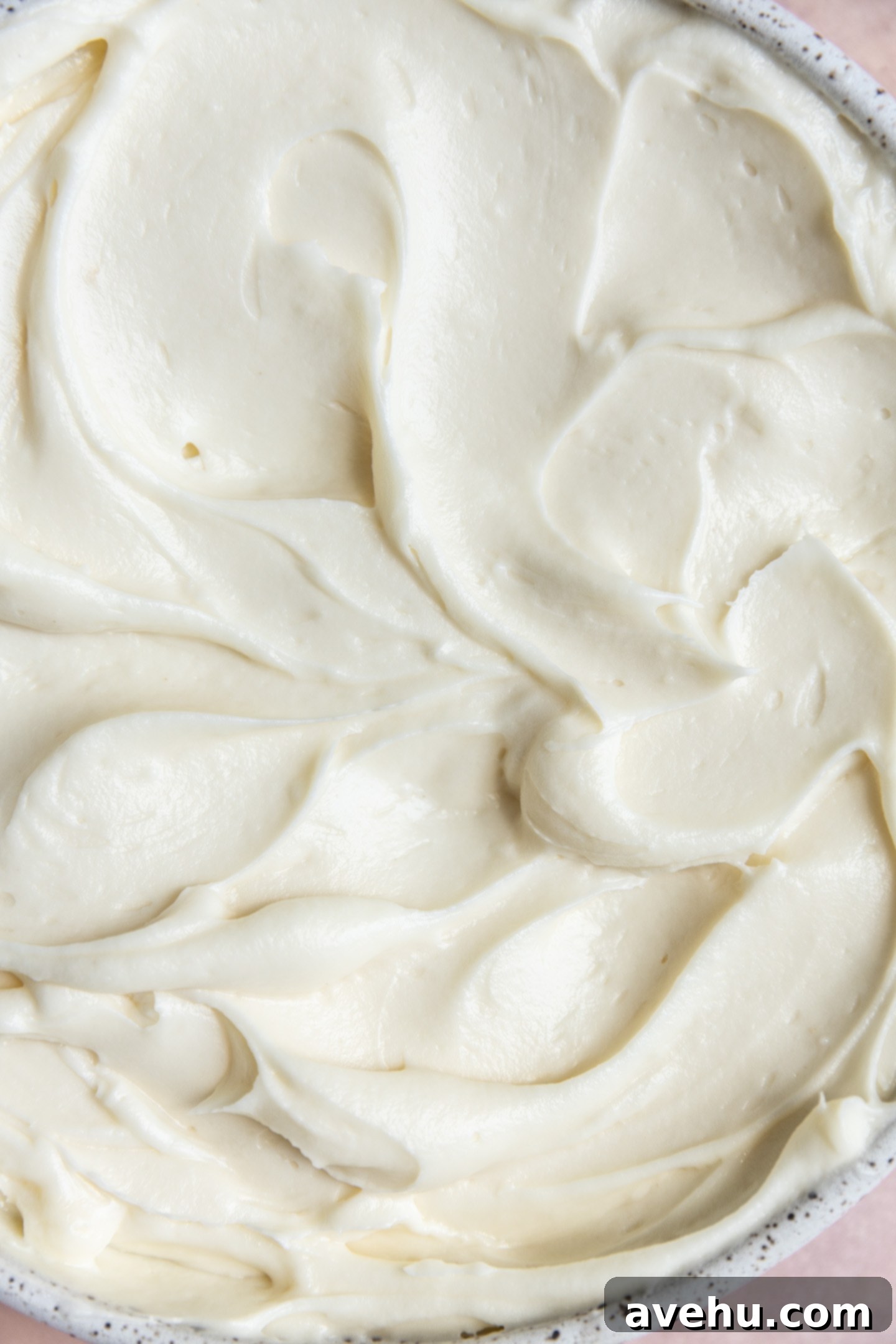

Easy Stable Cream Cheese Frosting You Can Pipe
10 minutes
20 minutes
30 minutes
12
cupcakes
Pin
Review
Save
Saved!
Prevent your screen from going dark
Ingredients
-
1 8 oz
full-fat cream cheese block, at room temperature -
1/2 cup
unsalted butter, at room temperature (1 stick) -
4 cups
confectioners sugar, sifted (460g) -
1/2 tsp
pure vanilla extract
Equipment
-
1 Stand or Hand mixer
Instructions
Making Your Stable Cream Cheese Buttercream Frosting
-
Ensure your full-fat cream cheese and unsalted butter are at perfect room temperature for optimal mixing. This allows them to cream together smoothly without lumps.
-
In the bowl of a stand mixer fitted with a paddle attachment (or using a hand mixer), combine the 8 oz block of cream cheese and the 1/2 cup unsalted butter. Mix on low-medium speed for 2-3 minutes until they are fully creamed, light, and perfectly smooth.
-
Stop the mixer and thoroughly scrape down the sides of the bowl with a spatula to ensure all ingredients are well incorporated. Add all 4 cups of sifted confectioners sugar at once. Begin mixing on low speed to prevent a cloud of sugar, then gradually increase to medium-high speed as the sugar mixes in. Continue mixing for 2-3 minutes more until the frosting is thick, fluffy, and completely smooth.
-
Reduce the mixer speed to low and add the 1/2 tsp pure vanilla extract. Mix again on medium speed for 2-3 minutes until the vanilla is fully incorporated and the frosting reaches a super light and incredibly fluffy consistency. The extended mixing here helps create air, resulting in a wonderfully airy and stable frosting.
-
For best results, especially if piping intricate designs, spoon the cream cheese frosting onto a sheet of plastic wrap and chill for at least 20 minutes before using. This brief chilling period helps firm it up even further, making it exceptionally easy to pipe.
Notes
Storing Your Cream Cheese Frosting
I have a practical tip for storing your leftover frosting: instead of using bulky bowls, I prefer to store my frosting in plastic wrap. It saves valuable fridge space, and frankly, who wants to wash extra bowls?
All I do is carefully scoop the freshly made frosting onto a large square of plastic wrap, then gather the edges and close it up on all sides, pressing out any excess air. This creates a compact, airtight package. Store it in the fridge for up to 2 weeks.
Remember, any desserts frosted with cream cheese frosting should always be stored in the fridge. Cream cheese is a dairy product and can spoil if left at room temperature for extended periods. When you’re ready to serve, simply take your dessert out of the fridge about 15-30 minutes beforehand to allow the frosting to soften slightly for the best eating experience.
Troubleshooting Common Cream Cheese Frosting Issues
- Frosting too soft? If after mixing and a quick chill, your frosting is still a bit too soft, gradually add 1/4 cup more sifted powdered sugar at a time, mixing until it reaches your desired consistency. A longer chill time (30-60 minutes) in the fridge can also help.
- Frosting too stiff? If your frosting feels too firm after chilling, let it sit at room temperature for 10-15 minutes or re-whip it on low speed in your mixer for a minute or two until it softens. You can also add a tiny splash (1/2 teaspoon at a time) of milk or cream if absolutely necessary, but add sparingly to maintain stability.
- Lumpy frosting? This usually means your butter and cream cheese weren’t at proper room temperature. Ensure they are soft enough to easily dent with a finger before creaming.
Frequently Asked Questions (FAQs)
Can I use low-fat cream cheese?
I highly recommend using full-fat cream cheese for this recipe. Low-fat varieties contain more water, which can make the frosting less stable and more prone to being runny, even with the extra powdered sugar. For the best, pipeable results, stick to full-fat cream cheese.
Can I add food coloring?
Absolutely! Gel food coloring is best as it’s concentrated and won’t add extra liquid to your frosting. Add it after the vanilla extract, a tiny drop at a time, mixing until you achieve your desired color.
Why do my ingredients need to be at room temperature?
Room temperature butter and cream cheese cream together much more smoothly and efficiently. This creates an emulsified base that traps air, resulting in a light, fluffy, and stable frosting. Cold ingredients will lead to a lumpy texture and may cause the frosting to separate.
Serving:
1
portion
,
Calories:
224
kcal
,
Carbohydrates:
40
g
,
Protein:
1
g
,
Fat:
8
g
,
Saturated Fat:
5
g
,
Polyunsaturated Fat:
1
g
,
Monounsaturated Fat:
2
g
,
Trans Fat:
1
g
,
Cholesterol:
20
mg
,
Sodium:
3
mg
,
Potassium:
4
mg
,
Sugar:
39
g
,
Vitamin A:
237
IU
,
Calcium:
4
mg
,
Iron:
1
mg
Dessert
Sam Adler
American
Did you make this recipe?
Please leave a star rating and review in the form below. I read them all!
